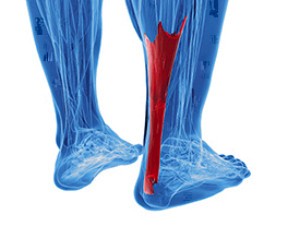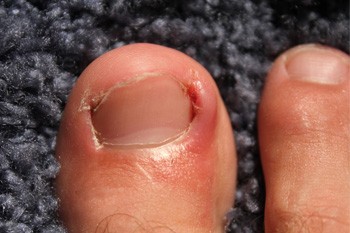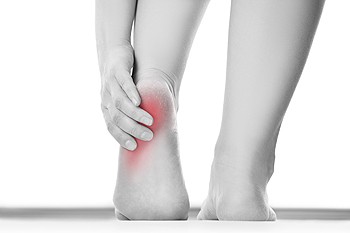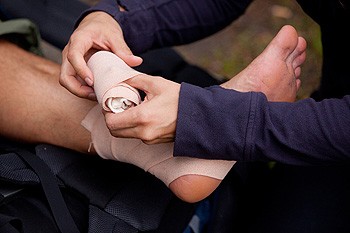 The flexibility and strength of the Achilles tendon is a necessary component in completing running and jumping activities. It is located in the back of the leg and connects the calf muscles to the heel. Many patients can experience an Achilles tendon injury, and this can happen as a result of improper warming up and cooling down after increasing the intensity of a new sport. Additionally, this type of injury may occur if there are existing heel spurs, exercising on an uneven surface, or from wearing shoes that do not fit correctly. Some of the symptoms that are associated with an Achilles tendon injury can consist of difficulty in flexing and pointing the affected foot, and pain that gradually worsens as the day progresses. If you think you have incurred an Achilles tendon injury, please seek the counsel of a podiatrist who can guide you toward the correct treatment techniques.
The flexibility and strength of the Achilles tendon is a necessary component in completing running and jumping activities. It is located in the back of the leg and connects the calf muscles to the heel. Many patients can experience an Achilles tendon injury, and this can happen as a result of improper warming up and cooling down after increasing the intensity of a new sport. Additionally, this type of injury may occur if there are existing heel spurs, exercising on an uneven surface, or from wearing shoes that do not fit correctly. Some of the symptoms that are associated with an Achilles tendon injury can consist of difficulty in flexing and pointing the affected foot, and pain that gradually worsens as the day progresses. If you think you have incurred an Achilles tendon injury, please seek the counsel of a podiatrist who can guide you toward the correct treatment techniques.
Achilles tendon injuries need immediate attention to avoid future complications. If you have any concerns, contact one of our podiatrists of Biebel & DeCotiis Podiatry Associates. Our doctors can provide the care you need to keep you pain-free and on your feet.
What Is the Achilles Tendon?
The Achilles tendon is a tendon that connects the lower leg muscles and calf to the heel of the foot. It is the strongest tendon in the human body and is essential for making movement possible. Because this tendon is such an integral part of the body, any injuries to it can create immense difficulties and should immediately be presented to a doctor.
What Are the Symptoms of an Achilles Tendon Injury?
There are various types of injuries that can affect the Achilles tendon. The two most common injuries are Achilles tendinitis and ruptures of the tendon.
Achilles Tendinitis Symptoms
- Inflammation
- Dull to severe pain
- Increased blood flow to the tendon
- Thickening of the tendon
Rupture Symptoms
- Extreme pain and swelling in the foot
- Total immobility
Treatment and Prevention
Achilles tendon injuries are diagnosed by a thorough physical evaluation, which can include an MRI. Treatment involves rest, physical therapy, and in some cases, surgery. However, various preventative measures can be taken to avoid these injuries, such as:
- Thorough stretching of the tendon before and after exercise
- Strengthening exercises like calf raises, squats, leg curls, leg extensions, leg raises, lunges, and leg presses
If you have any questions please feel free to contact one of our offices located in Holmdel and Middletown, NJ . We offer the newest diagnostic tools and technology to treat your foot and ankle needs.




 Ingrown toenails
Ingrown toenails





